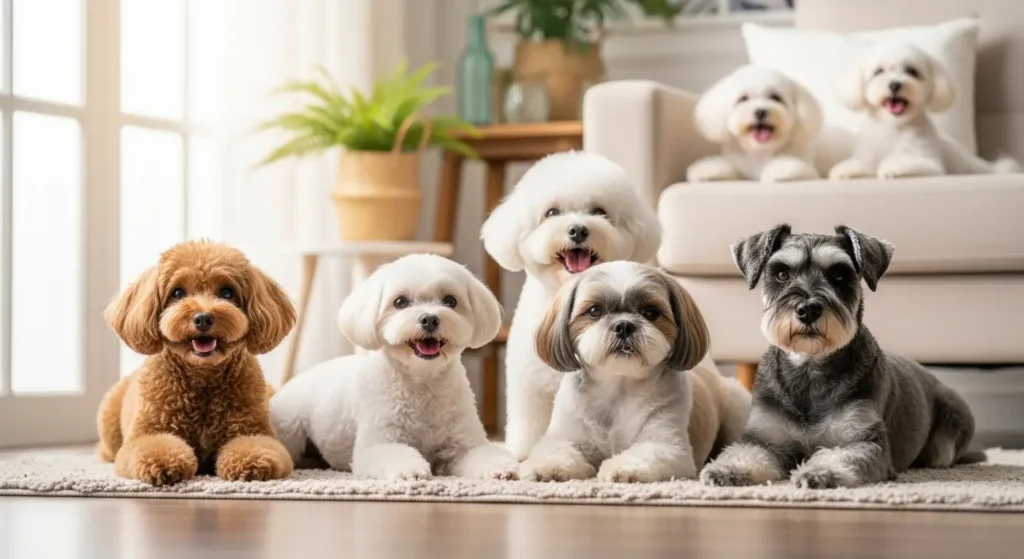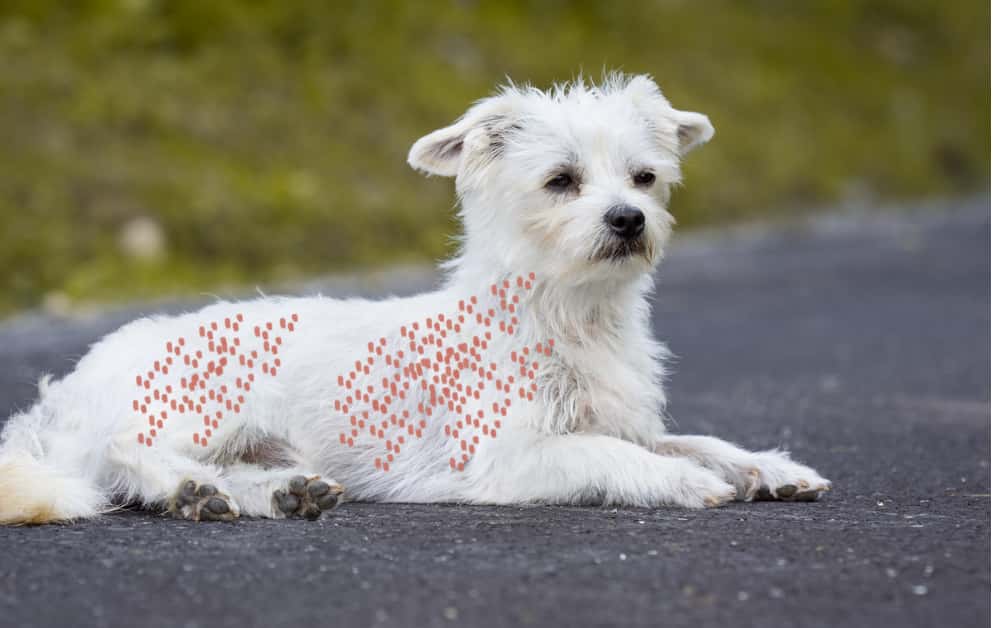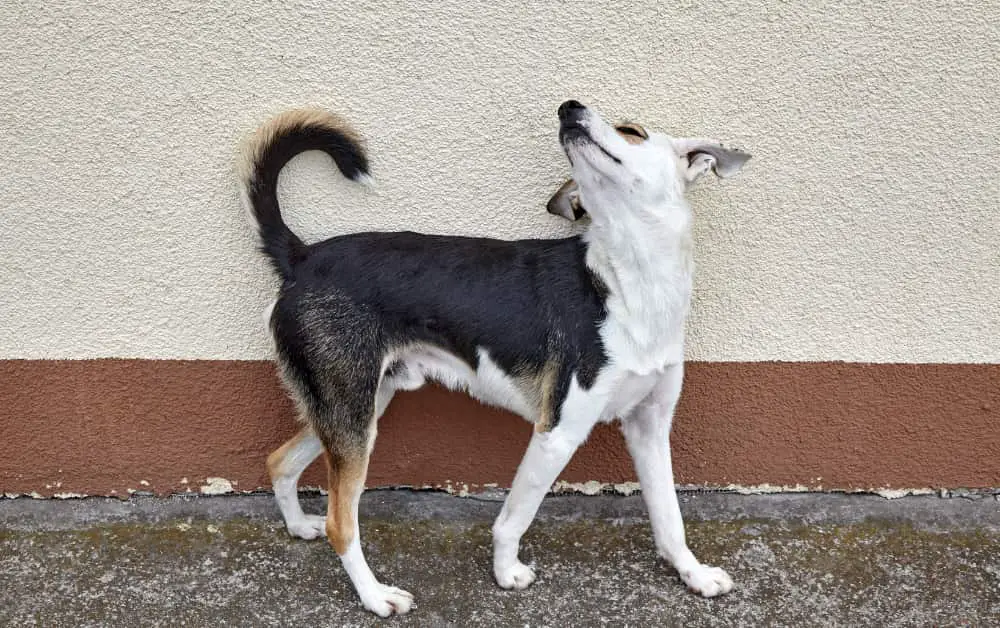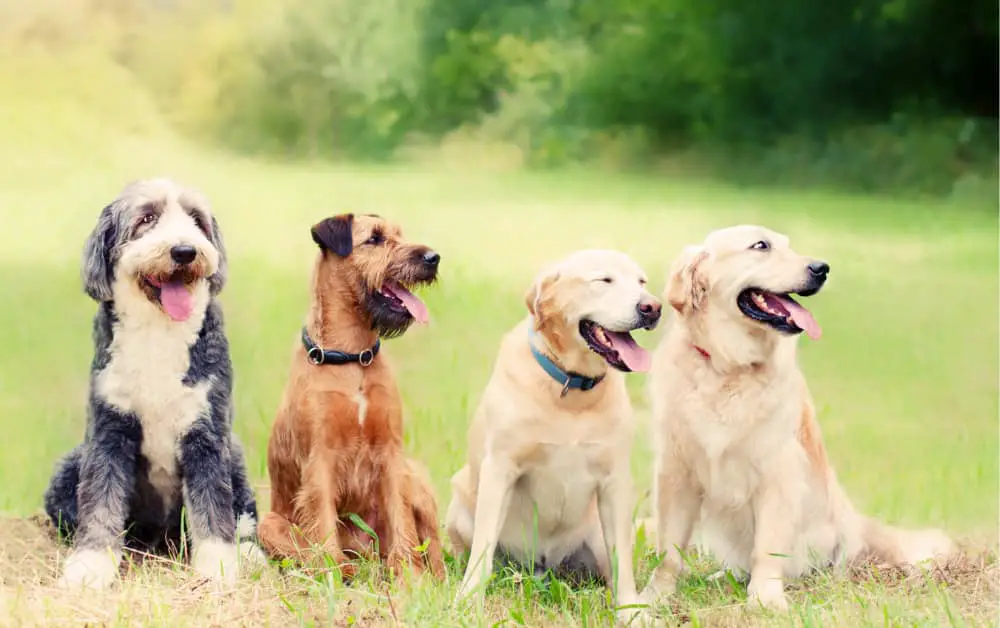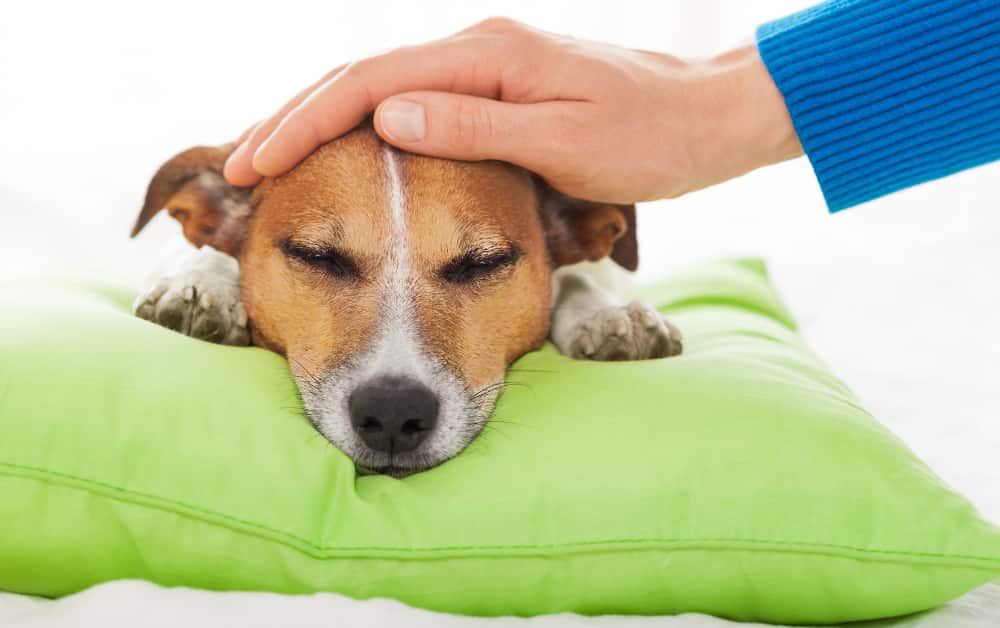Looking for the perfect canine companion that won’t leave fur all over your apartment furniture or trigger your allergies? You’re in the right place. While no dog is 100% hypoallergenic, certain breeds produce less dander and shed minimally, making them ideal choices for apartment dwellers and allergy sufferers.
These Dog Breeds That Don’t Shed offer the perfect balance of companionship, adaptability to smaller living spaces, and low-maintenance coats that keep both your home and your sinuses happy.
Indoor Dog Breeds That Don’t Shed
- Poodle (Toy, Miniature, and Standard)
- Bichon Frise
- Shih Tzu
- Maltese
- Schnauzer (Miniature, Standard, and Giant)
- Portuguese Water Dog
- Italian Greyhound
- Chinese Crested
- Havanese
| Breed | Size | Exercise Needs | Grooming Requirements | Apartment Suitability | Allergy-Friendliness |
|---|---|---|---|---|---|
| Poodle (Toy/Mini) | Small | Moderate | High | Excellent | Excellent |
| Bichon Frise | Small | Moderate | High | Excellent | Excellent |
| Shih Tzu | Small | Low-Moderate | High | Excellent | Excellent |
| Maltese | Toy | Low | High | Excellent | Excellent |
| Miniature Schnauzer | Small | Moderate | Moderate-High | Excellent | Very Good |
| Portuguese Water Dog | Medium | High | High | Fair | Excellent |
| Italian Greyhound | Toy | Moderate | Low | Excellent | Very Good |
| Chinese Crested | Toy | Low-Moderate | Low-Moderate | Excellent | Excellent |
| Havanese | Small | Moderate | High | Excellent | Excellent |
1. Poodle (Toy, Miniature, and Standard)
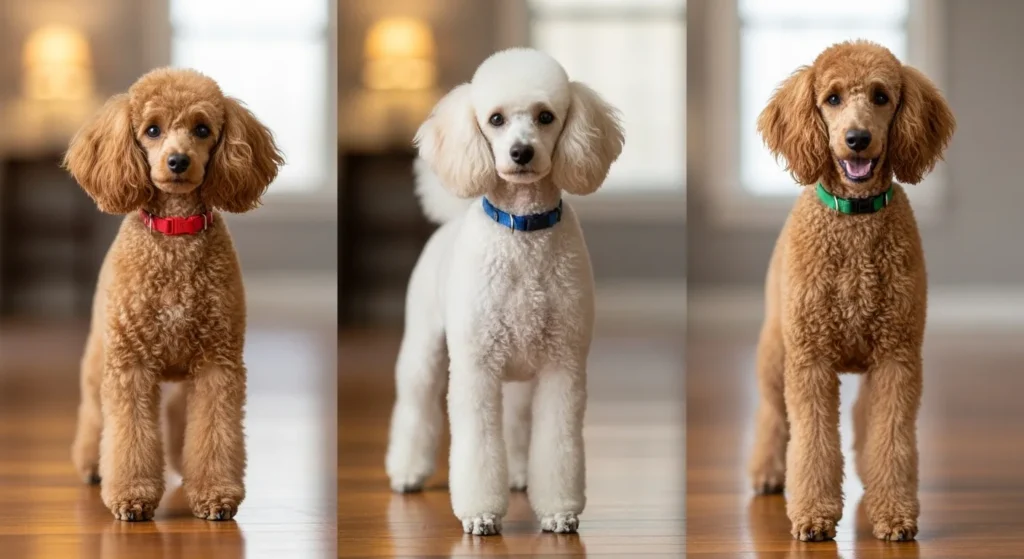
The Poodle comes in three sizes and is consistently ranked among the smartest dog breeds.
Key Characteristics:
- Size: Toy (4-6 lbs), Miniature (10-15 lbs), Standard (40-70 lbs)
- Temperament: Intelligent, active, and elegant
- Exercise Needs: Moderate (30-60 minutes daily)
- Grooming: High (requires professional grooming every 4-6 weeks)
- Apartment Suitability: Excellent (especially Toy and Miniature)
Poodles are often the first breed that comes to mind when people think of best indoor dogs no shedding. Their dense, curly coats trap dander rather than releasing it into the environment. Available in three distinct sizes, there’s a Poodle for nearly every living situation.
These brilliant dogs excel in obedience training and enjoy mental challenges. Their hypoallergenic coats do require regular grooming to prevent matting, but the trade-off is virtually no shedding. Poodles form strong bonds with their families and are generally good with children and other pets when properly socialized.
2. Bichon Frise
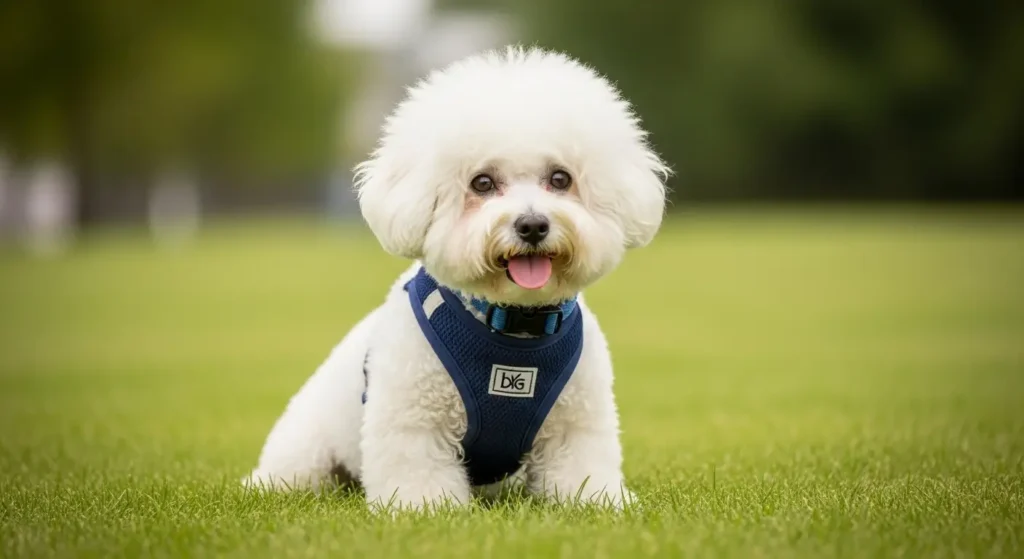
The cheerful Bichon Frise is known for its powder-puff appearance and playful personality.
Key Characteristics:
- Size: Small (12-18 lbs)
- Temperament: Cheerful, playful, and affectionate
- Exercise Needs: Moderate (30 minutes daily)
- Grooming: High (daily brushing, professional grooming every 4-6 weeks)
- Apartment Suitability: Excellent
The Bichon Frise is a small, sturdy dog with a puffball coat that sheds minimally. Their hair continuously grows and doesn’t fall out, making them an excellent choice for allergy sufferers. Bichons are known for their cheerful disposition and adapt well to various living situations, including apartments.
These dogs thrive on companionship and can suffer from separation anxiety if left alone for long periods. Regular grooming is essential to maintain their signature look and prevent matting. Bichons are generally healthy dogs with a lifespan of 12-15 years.
3. Shih Tzu

The Shih Tzu was bred as a companion dog and excels at its original purpose.
Key Characteristics:
- Size: Small (9-16 lbs)
- Temperament: Affectionate, outgoing, and alert
- Exercise Needs: Low to moderate (20-30 minutes daily)
- Grooming: High (daily brushing, regular trimming)
- Apartment Suitability: Excellent
Originally bred for royalty in China, the Shih Tzu is a charming companion dog with a luxurious coat that sheds very little. Their hair grows continuously, similar to human hair, rather than falling out seasonally. This makes them one of the best choices for allergy sufferers who want a small, affectionate pet.
Shih Tzus are adaptable, friendly, and don’t require much exercise, making them perfect for apartment living. They do need regular grooming to keep their long coats tangle-free. Many owners opt for a shorter “puppy cut” to reduce maintenance while preserving the breed’s adorable appearance.
4. Maltese
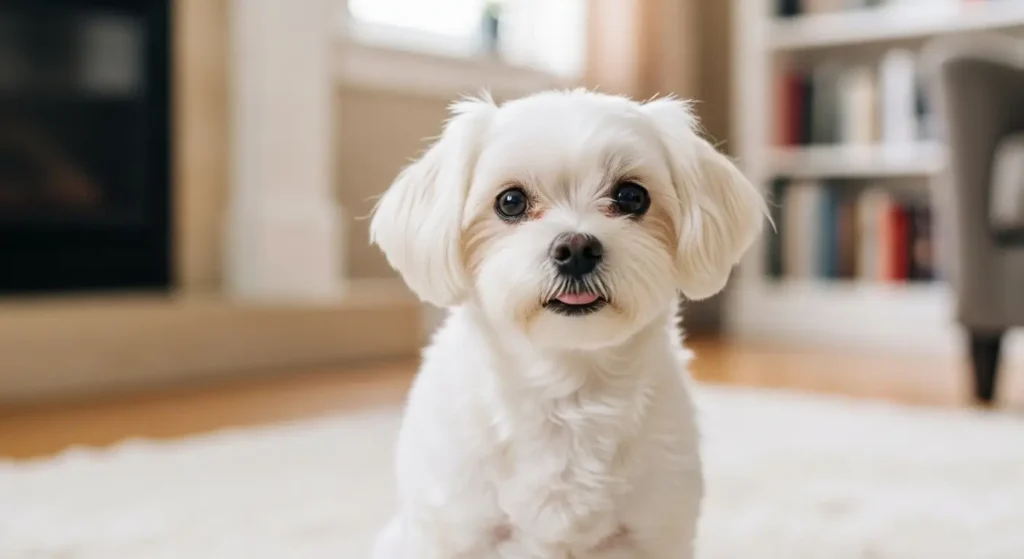
The elegant Maltese has been a beloved companion dog for over 2,000 years.
Key Characteristics:
- Size: Toy (under 7 lbs)
- Temperament: Gentle, playful, and charming
- Exercise Needs: Low (20-30 minutes daily)
- Grooming: High (daily brushing, regular bathing)
- Apartment Suitability: Excellent
The Maltese is an ancient breed known for its floor-length white coat that doesn’t shed. These tiny dogs are perfect for apartment living due to their small size and minimal exercise requirements. Despite their delicate appearance, Maltese are relatively sturdy and adaptable.
Their single layer of hair rather than fur makes them less likely to trigger allergies. However, their beautiful white coat requires daily brushing to prevent mats and tangles. Maltese are intelligent, eager to please, and form strong bonds with their owners, making them excellent therapy dogs as well as companions.
5. Schnauzer (Miniature, Standard, and Giant)
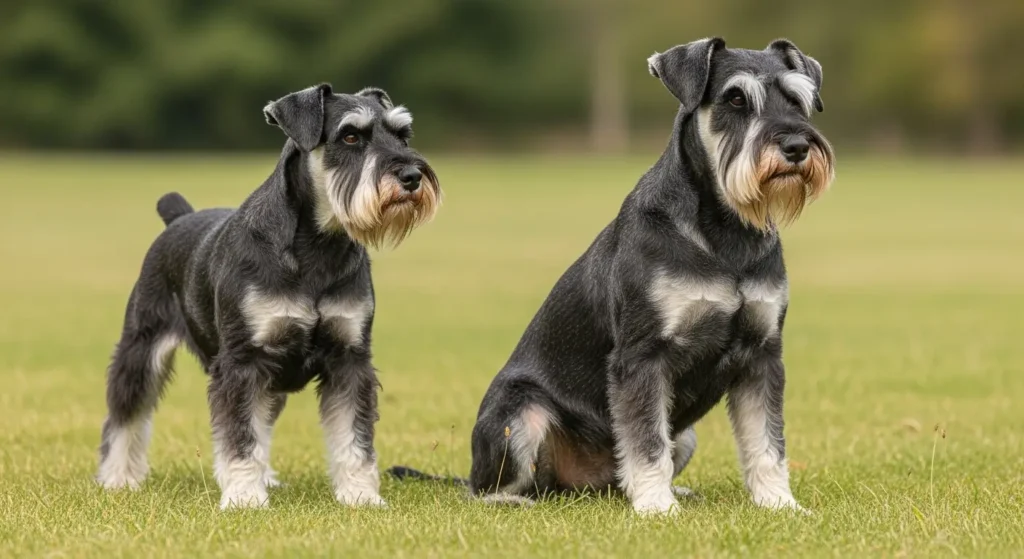
Schnauzers come in three sizes and are known for their distinctive beards and eyebrows.
Key Characteristics:
- Size: Miniature (11-20 lbs), Standard (30-50 lbs), Giant (55-85 lbs)
- Temperament: Intelligent, spirited, and friendly
- Exercise Needs: Moderate to high (30-60 minutes daily)
- Grooming: Moderate to high (regular clipping, stripping)
- Apartment Suitability: Good to excellent (Miniature best for apartments)
Schnauzers of all sizes have wiry, low-shedding coats that make them suitable for allergy sufferers. Their distinctive beards and eyebrows give them a thoughtful, expressive appearance. Miniature Schnauzers are particularly well-suited for apartment living due to their smaller size and moderate exercise needs.
These dogs are intelligent and sometimes stubborn, requiring consistent training from an early age. Their wiry coat needs regular grooming, including clipping or hand-stripping, to maintain its texture and appearance. Schnauzers are generally healthy dogs with a lifespan of 12-15 years.
6. Portuguese Water Dog
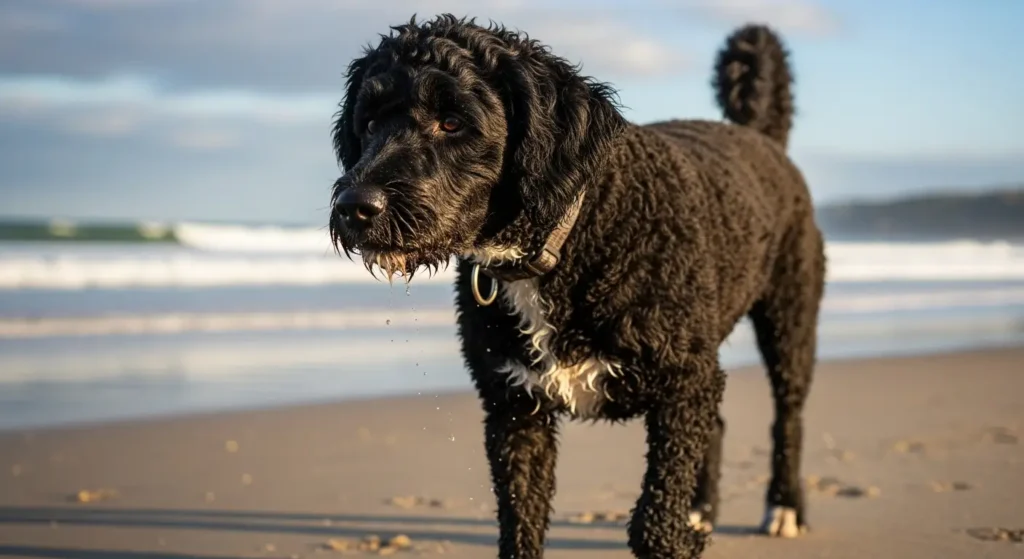
The Portuguese Water Dog gained fame as the Obama family’s choice for the White House.
Key Characteristics:
- Size: Medium (35-60 lbs)
- Temperament: Intelligent, energetic, and loyal
- Exercise Needs: High (60+ minutes daily)
- Grooming: High (regular brushing, professional grooming every 6-8 weeks)
- Apartment Suitability: Fair (requires sufficient exercise)
Made famous by the Obama family, the Portuguese Water Dog is a medium-sized breed with a curly or wavy coat that sheds minimally. Originally bred to help fishermen, these dogs are intelligent, energetic, and excellent swimmers. While they can adapt to apartment living, they require substantial daily exercise to stay happy and healthy.
Their hypoallergenic coat needs regular grooming to prevent matting. Portuguese Water Dogs are highly trainable and form strong bonds with their families. They’re generally good with children and other pets when properly socialized. Their intelligence and energy make them excellent candidates for dog sports and advanced training.
7. Italian Greyhound
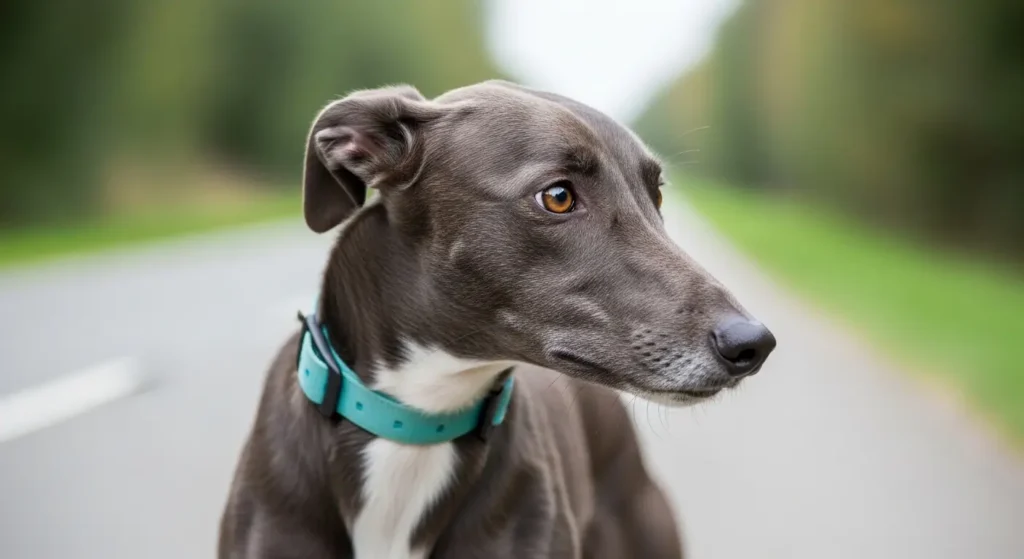
The Italian Greyhound combines the elegance of a Greyhound in a tiny package.
Key Characteristics:
- Size: Toy (7-14 lbs)
- Temperament: Sensitive, playful, and affectionate
- Exercise Needs: Moderate (30-40 minutes daily)
- Grooming: Low (occasional brushing, regular nail trimming)
- Apartment Suitability: Excellent
The Italian Greyhound is a slender, elegant breed with a short coat that sheds minimally. These sighthounds are affectionate with their families but can be reserved with strangers. Their small size and moderate exercise needs make them well-suited for apartment living, though they do enjoy short bursts of running in a secure area.
Italian Greyhounds have very little body fat and thin coats, making them sensitive to cold weather. They’ll need a sweater or jacket in cooler climates. Grooming requirements are minimal compared to other breeds on this list, consisting mainly of regular nail trimming and occasional baths. Their lifespan is typically 12-15 years.
8. Chinese Crested
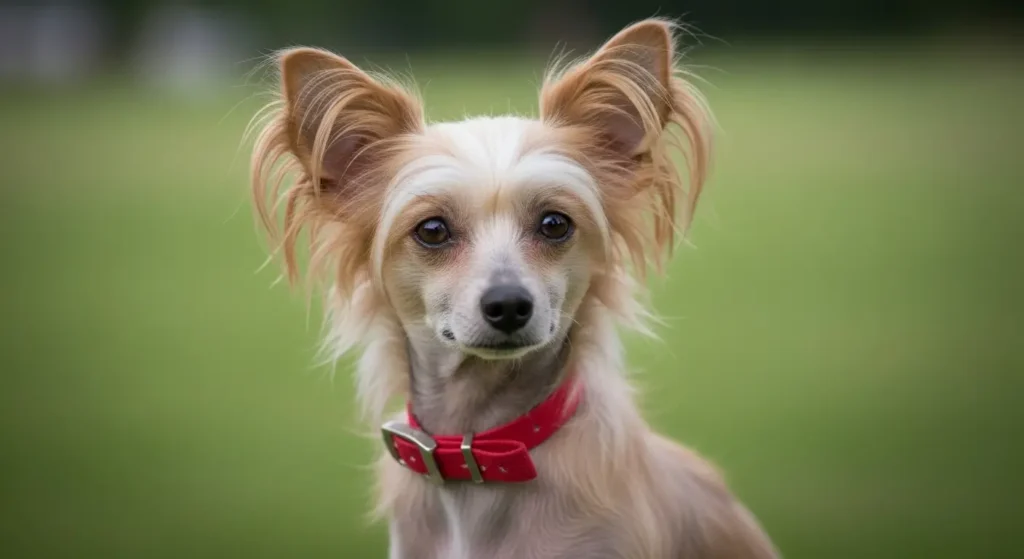
The Chinese Crested comes in both hairless and coated varieties.
Key Characteristics:
- Size: Toy (5-12 lbs)
- Temperament: Affectionate, lively, and alert
- Exercise Needs: Low to moderate (20-30 minutes daily)
- Grooming: Varies (hairless needs skin care, coated needs regular brushing)
- Apartment Suitability: Excellent
The Chinese Crested is a unique breed that comes in two varieties: hairless and coated (called “Powderpuff”). Both varieties are considered hypoallergenic, making them excellent choices for allergy sufferers. The hairless variety has minimal grooming needs but requires skin protection and moisturizing, while the Powderpuff has a soft coat that needs regular brushing.
These small dogs are well-suited for apartment living due to their tiny size and moderate exercise needs. Chinese Cresteds are affectionate with their families but can be wary of strangers. They’re intelligent and trainable, though they can be sensitive to harsh training methods. Their lifespan is typically 13-18 years, making them one of the longer-lived toy breeds.
9. Havanese

The Havanese is the national dog of Cuba and known for its cheerful disposition.
Key Characteristics:
- Size: Small (7-13 lbs)
- Temperament: Cheerful, curious, and responsive
- Exercise Needs: Moderate (30 minutes daily)
- Grooming: High (regular brushing, professional grooming every 4-6 weeks)
- Apartment Suitability: Excellent
The Havanese is a charming small dog with a silky coat that sheds minimally. As the national dog of Cuba, these dogs were bred as companions and excel at their job. They’re adaptable to various living situations, including apartments, and are generally good with children and other pets.
Their long, silky coat requires regular grooming to prevent tangles and mats, though many owners opt for a shorter “puppy cut” for easier maintenance. Havanese are intelligent and trainable, with a cheerful disposition that makes them popular therapy dogs. They form strong bonds with their families and can suffer from separation anxiety if left alone for long periods.
Non-Shedding Dogs: What Makes Them Special?
Before diving into our top breeds, it’s important to understand what makes certain dogs “non-shedding.” In reality, all dogs shed to some degree—even humans shed skin cells and hair! However, Dogs with No Shedding or minimal shedding typically have hair that grows continuously rather than fur that goes through growth and shedding cycles.
These breeds often have:
- Hair-like coats that grow continuously
- Reduced dander production
- Less drooling (which can also spread allergens)
- Slower hair follicle turnover
For allergy sufferers, it’s not actually dog hair that triggers reactions but proteins found in dander, saliva, and urine. Breeds that shed less tend to spread fewer of these allergens around your home, making them more suitable for sensitive individuals.
Benefits of Non-Shedding Dogs for Apartment Living
Living in an apartment presents unique challenges for dog owners. Space is limited, neighbors are close by, and maintaining a clean living environment is essential. Here’s why best indoor dogs no shedding breeds are particularly well-suited for apartment life:
- Cleaner Living Space: Less shedding means less hair on your furniture, clothes, and floors.
- Reduced Allergens: Lower dander production creates a healthier environment for allergy-prone residents.
- Neighbor-Friendly: Many non-shedding breeds are quieter and less likely to disturb neighbors.
- Space Efficiency: Most low-shedding breeds are smaller in size, making them perfect for compact living quarters.
- Easier Maintenance: While grooming is still necessary, the day-to-day cleanup of dog hair is significantly reduced.
Care Tips for Non-Shedding Dogs
While these breeds shed less than others, they still require specific care to keep them healthy and minimize allergens in your home:
Grooming Essentials
Even non-shedding dogs need regular grooming to maintain coat health and reduce dander:
- Regular Brushing: Most non-shedding breeds need brushing several times a week to prevent mats and tangles.
- Professional Grooming: Many breeds require professional grooming every 4-8 weeks.
- Bathing: Use a gentle, hypoallergenic shampoo every 3-4 weeks, or as recommended by your vet.
- Ear Cleaning: Especially important for breeds with floppy ears that can trap moisture.
- Nail Trimming: Regular nail care prevents discomfort and mobility issues.
Creating an Allergy-Friendly Home
To further reduce allergens in your living space:
- Use HEPA Filters: High-efficiency particulate air (HEPA) filters can capture dander and other allergens.
- Wash Bedding Regularly: Clean your dog’s bedding, toys, and your own bedding frequently in hot water.
- Create Dog-Free Zones: Designate certain areas, like bedrooms, as dog-free spaces.
- Regular Cleaning: Vacuum with a HEPA-filter vacuum and damp dust surfaces regularly.
- Consider Hard Flooring: Carpet traps more allergens than hardwood, tile, or laminate flooring.
Key Takeaways
- No dog breed is completely hypoallergenic, but some produce fewer allergens and shed minimally
- Regular grooming is essential even for non-shedding breeds to maintain coat health and reduce dander
- Smaller breeds often adapt better to apartment living due to their size and exercise needs
- Factors like temperament, energy level, and trainability are as important as shedding when choosing an indoor dog
- Proper cleaning routines and air filtration can further reduce allergens in your home
You May Also Like:
FAQs
Are there truly 100% hypoallergenic dogs?
No dog breed is 100% hypoallergenic. All dogs produce dander, saliva, and urine that contain allergenic proteins. However, some breeds produce fewer allergens and shed less, making them better choices for people with allergies. The term “hypoallergenic” simply means “less likely to cause an allergic reaction,” not “allergy-proof.”
How often should I groom my non-shedding dog?
Grooming frequency depends on the specific breed and coat type. Most non-shedding breeds require brushing several times a week and professional grooming every 4-8 weeks. Regular grooming is essential to prevent matting, which can be uncomfortable for your dog and trap more dander.
Do smaller dogs produce fewer allergens than larger dogs?
Generally, smaller dogs produce fewer allergens simply because they have less skin surface area and produce less dander overall. However, some larger breeds like the Standard Poodle or Portuguese Water Dog have coats that trap dander effectively, making them surprisingly good choices for allergy sufferers despite their size.
Are mixed-breed dogs ever hypoallergenic?
It’s possible for mixed-breed dogs to inherit the low-shedding characteristics of their hypoallergenic parents. However, it’s impossible to predict with certainty which traits a mixed-breed puppy will inherit. If you’re considering a mixed-breed dog and have allergies, spend time with the specific puppy before bringing it home to see how you react.
Conclusion
Choosing the right dog breed is a significant decision, especially for apartment dwellers and allergy sufferers. The nine breeds highlighted in this article offer excellent options for those seeking Dog Breeds That Don’t Shed while providing wonderful companionship.
Remember that while these breeds shed less and produce fewer allergens, no dog is completely hypoallergenic. Regular grooming, proper cleaning routines, and sometimes medical management are still necessary for allergy sufferers.
When selecting a breed, consider not only shedding and allergen production but also temperament, exercise needs, and how well the breed fits with your lifestyle. The perfect dog for you is one that matches your living situation, activity level, and family dynamics.
With the right breed and proper care, you can enjoy the companionship of a furry friend without the constant battle with shedding and allergies. The joy and unconditional love a dog brings to your home are well worth the effort of finding the perfect match for your needs.

